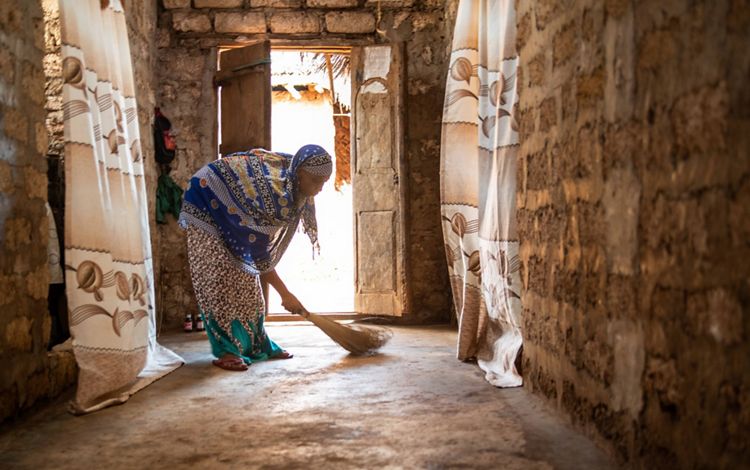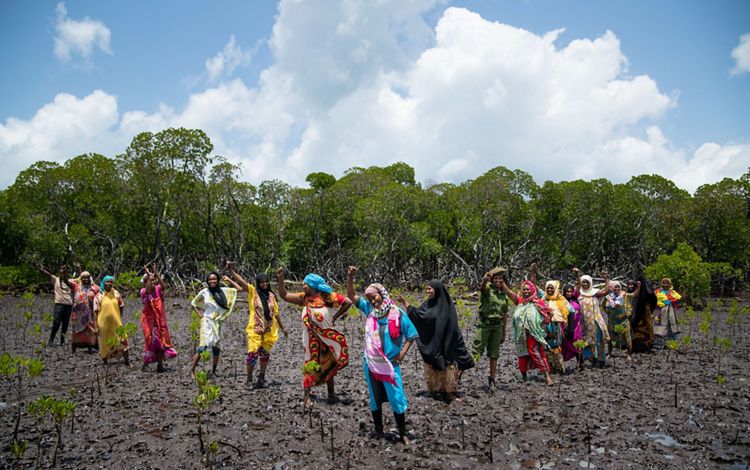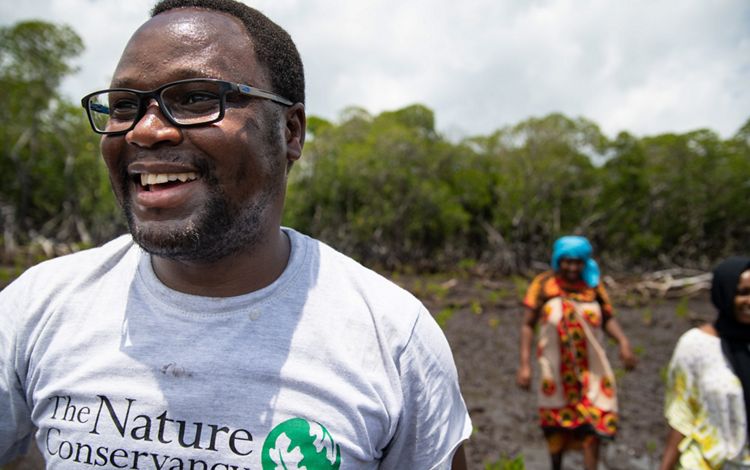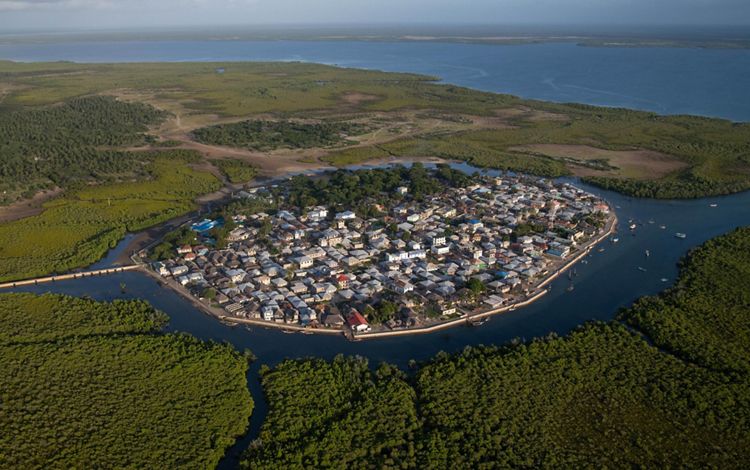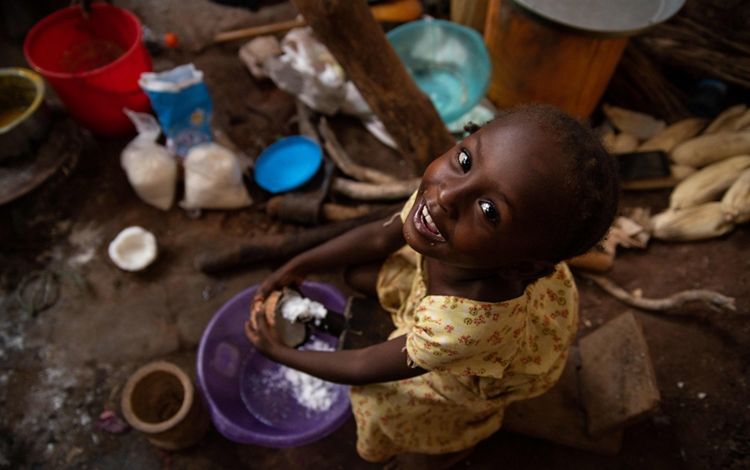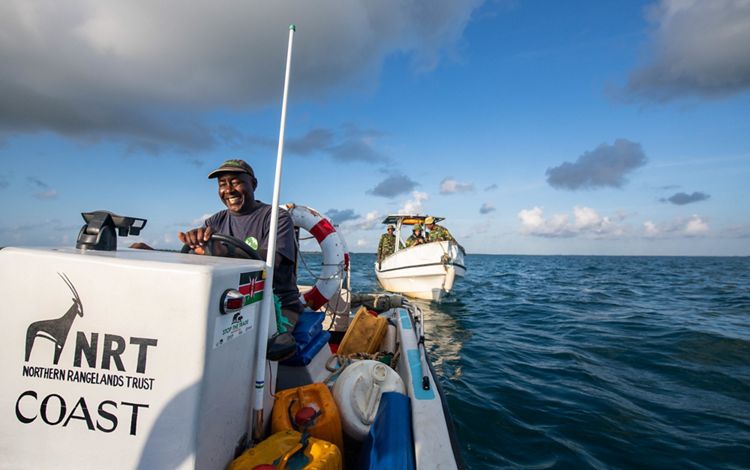
Patience Pays Off
Octopus Fisherwomen in Kenya Benefit from the Science of Recovery Times
The glaring noon sun blazed down as Amina drudged along the coastline to reach the octopus fishing zone. Her steely expression mirrored her determination to capture octopus that she would sell in exchange for flour to make fried bread for her five children. It had been a long four months since she had been in this favorite fishing ground, and she was ready for a long and fruitful afternoon.
A Fishing Tradition
Amina Ahmed describes herself as “Mama Pweza (Mama Octopus).” She’s been fishing for octopuses in her village since she was a teenager. For Amina and many other women in this region, octopus fishing provides a primary source of income and food for their families.
The fisherwomen wait for the falling tide and wade into water no more than knee deep. Experienced fishers like Amina look for the tell-tale sign of tiny bubbles on the surface to indicate where a well-camouflaged octopus might be hiding between rocks and coral. The process is done much like traditional spear fishing — one quick jab and the octopus is collected in a bucket.
This method of fishing works well for women, because it requires few resources and can be done in shallow waters. Men, who often have better swimming skills and fishing equipment, can access deeper and more productive octopus fishing grounds.
But in Lamu, fishers like Amina were catching fewer and smaller octopuses. While the data on octopus stocks in Kenya is limited, recent reports indicate the fishery is experiencing over-fishing, habitat destruction, and increasing demand. The challenge is, while the fishery is open access and regulated, it does not have octopus-specific legislated management measures.
Because the octopus fishery is so important in Lamu County — where dependence on the marine ecosystem is high and livelihood options are few and far between — the fisher community knew taking active measures could have a big impact on them and the environment.
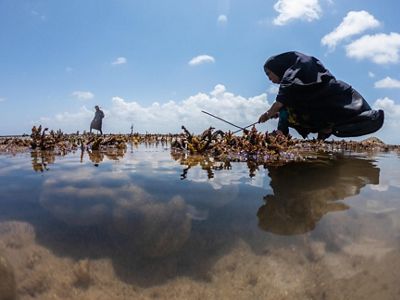
Reversing the Trend
Amina’s village is one of 10 villages that make up the Pate Marine Community Conservancy (PMCC), which is a conservancy member of our partner Northern Rangleands Trust (NRT). The purpose of PMCC is broadly to improve livelihoods in the community through the conservation and sustainable use of natural resources. Over the last few years, TNC, NRT, the county government of Lamu, and other agencies have worked to expand community-based conservation efforts. Recent successes include establishing fisheries co-management plans for the Beach Management Units (BMUs), training community members in science-based monitoring systems, applying the FishPath tool to increase the sustainability of lobster, octopus, and other fisheries, and empowering women leaders through customized training and a management program targeting women’s associations.
In April 2018, seven representatives from TNC, NRT, and PMCC participated in a learning exchange to southwest Madagascar. Among the group was Firdaus Athman, a community scout and radio operator for PMCC. She was particularly inspired by the village of Andavadoaka’s results in temporarily closing their octopus fishery, and when she returned she became one of the driving forces behind the creation of a women’s fishing association around PMCC.
TNC and NRT were inspired, too, and learned that this model could serve as a replicable approach for octopus management.
“We knew that octopuses undergo short periods of rapid growth and have a relatively short life span, making them an ideal species for management interventions, as harvesters can see results after only a few months.” said George Maina, TNC’s Fisheries Strategy Manager for Africa.
The concept was simple, but the key would be to get the women’s association to agree to the idea of closing an important octopus fishery. They were nervous, and for good reason: What if the plan didn’t work? They were being asked to give up their income — however scant it had become — for four whole months. Yet after many months of meetings, discussions, and building awareness and trust, they took a big leap of faith.

A Daring Experiment
In January 2019, the three BMUs from Shanga-Ishakani, Shanga Rubu, and Pate villages came together and agreed to close off a 1-square-kilometer area. The community members developed their own rules, including a minimum weight limit for each octopus caught, the percentage of proceeds that would go into the Women’s Association bank account, and punitive measures for those who broke the rules.
The fishery reopened in May for five days to underwhelming results. But the women were not deterred. They identified poaching as a key challenge and as a result, the PMCC rangers increased their efforts in monitoring and patrolling the fishery.
After the second re-opening in September 2019, the women were hopeful for better results, and dozens of fishers descended to the beach with their buckets. This time, the results of the closure were decisive. A total of 868 kilograms (1,913 pounds) of octopus were caught in four days by 70 fisherwomen, up from the 186 kilograms (410 pounds) of mostly smaller octopuses from May. The fisherwomen now had leverage, and negotiated higher prices for their octopus catches.
“After the four-month closure, we got a large harvest of octopuses,” Amina said. “I have plans to now expand my small business [selling sundries] with the profits. We as fisherwomen are overjoyed.”
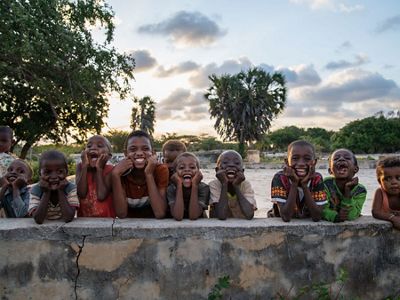
PMCC now aims to establish more temporary octopus closures with opening sessions that rotate throughout the year. And news of the success is spreading: Neighboring Kiunga Community Conservancy has recently started discussions to replicate the model after lessons from PMCC were shared during a learning exchange.
The octopus closure is just one way we are working with partners to sustainably manage critical coastal marine habitats in ways that also deliver community benefits. Our bottom-up approach is creating and equipping communities to own and benefit from healthy fisheries, and at the same time, protect, restore, and better manage broader coastal ecosystems such as mangroves, corals, and seagrasses.
Thank you to all of our partners and collaborators, including Pate Marine Community Conservancy, Northern Rangelands Trust, Fauna and Flora International, Blue Ventures, the Royal Danish Embassy, Kenya Fisheries Service, the United States Agency for International Development, Kenya Wildlife Service, and Lamu County government.
Fisheries Management on Coastal Kenya
